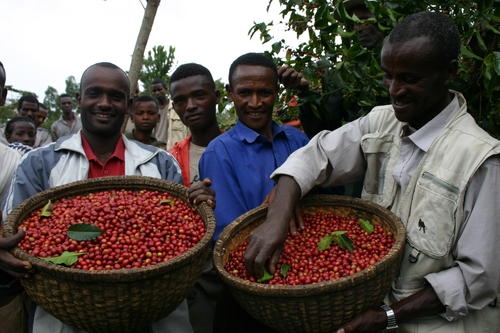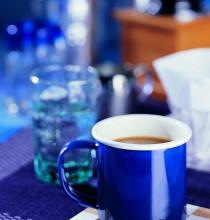"Black Honey" Costa Rica Finca las of La Jas Manor in the Central Valley of Costa Rica
Boutique coffee (specialty coffee) is also called "specialty coffee" or "select coffee". It refers to coffee made from a small number of raw beans with excellent taste grown in an ideal geographical environment. Depending on the special soil and climatic conditions in which they grow, they have outstanding flavor. After strict selection and classification, this kind of coffee can be regarded as a selection of coffee beans because of its hard texture, rich taste and excellent flavor.
"Black Honey" of La Jas Manor in the Central Valley of Costa Rica

Costa Rica Finca las lajas
Flavor: sweetness, syrup, fruit aroma, cherry (also understood as sour apple), strawberry
Characterized by heavy fermentation, thick and thick texture, light roasting with fermented grapes and hints of strawberry and chocolate, deep baking with more fruit aromas
Origin: Costa Rica
Altitude: 1300-1500 m
Bean seed: Kaddura Kaduai
Treatment: honey treatment
Las Lajas small coffee processing farm has a history of growing and processing coffee for more than 80 years. In 1995, when the second generation operator of Las Lajas small coffee processing farm died of cancer, the third generation French Francisca and Oscar Chac ó n husband and wife suspected that the chemical fertilizers and pesticides used on the farm were responsible for the disease. Since then, coffee crops have been treated with natural, homemade compost and eco-friendly natural farming methods. After five years of unremitting efforts, the soil, branches, leaves, and fruits of the farm are all qualified. In 2000, Lajas became the first manor in Costa Rica to be organically certified.
Lajas is also the first manor in Central America to start honey treatment and natural sun treatment. Tanning is a very traditional practice, which uses the least resources, but because there are too many uncontrollable factors, it is very difficult to do well. Francesca has added many innovations, such as using the sugar meter (Brix meter), which is often equipped in the wine industry, to measure the sugar content of the fruit, and to determine the best time and treatment of harvest according to the sugar content of Brix. Only those with more than 20% sweetness will be exposed to the sun. The Brix value of general fruit is 14 for apple, 12 for lemon and 18 for passion fruit, but the coffee cherry in Lajas can reach 21 / 22%.
The natural treatment process of French Sika is quite laborious. The artificially picked high-sugar coffee fruit is first placed in an African viaduct in the sun for about 10 days, and then placed in a plastic-covered greenhouse to create more direct heat and continue to dry. until the water content reaches 11.5%. The slow drying process allows raw beans to develop more natural sweetness from the inside, but it also needs to be taken care of more carefully and constantly turned. In the end, the red cherries turn black, giving off the aroma of fruitcake, black sugar and even sherry. This is the "Perla Negra"!
There are eight Costa Rican producing areas, of which Tarazu, the Central Valley and the Western Valley are recognized as the three best producing areas. Las Lajas is located in the foothills of Sabanilla de Alajuela and Poas Volcano in the Central Valley. Strictly speaking, "Lajas" is actually the name of the Chakon family processing plant. The name of the manor is Finca La Mirella, but bean bakers all over the world are also used to calling it Finca las lajas.
Important Notice :
前街咖啡 FrontStreet Coffee has moved to new addredd:
FrontStreet Coffee Address: 315,Donghua East Road,GuangZhou
Tel:020 38364473
- Prev

Introduction of high quality washed Honduran coffee beans
The extremely balanced nature of Honduran coffee makes it a wide range of uses. Can be used to mix coffee, can also be used as a single product to brew, mixed with Honduran coffee Italian concentrate will have a surprising effect. Although in troubled times, coffee can also grow its own beauty, it is not difficult to understand why so many people are so obsessed with this dark liquid.
- Next

An introduction to Mantenin Coffee, a fine coffee bean growing in the plateau and mountain area at an altitude of 750-1500 meters.
The gentleman in coffee, Sumatra Manning, is a fine coffee bean growing in the plateau and mountain area at an altitude of 750-1500 meters. In the 17th century, the Dutch first introduced Arabica saplings to Ceylon (present-day Sri Lanka) and Indonesia. In 1877, a large-scale disaster hit the Indonesian islands. Coffee rust destroyed almost all the coffee trees and people had to put them.
Related
- Does Rose Summer choose Blue, Green or Red? Detailed explanation of Rose Summer Coffee plots and Classification in Panamanian Jade Manor
- What is the difference between the origin, producing area, processing plant, cooperative and manor of coffee beans?
- How fine does the espresso powder fit? how to grind the espresso?
- Sca coffee roasting degree color card coffee roasting degree 8 roasting color values what do you mean?
- The practice of lattes: how to make lattes at home
- Introduction to Indonesian Fine Coffee beans-- Java Coffee producing area of Indonesian Arabica Coffee
- How much will the flavor of light and medium roasted rose summer be expressed? What baking level is rose summer suitable for?
- Introduction to the characteristics of washing, sun-drying or wet-planing coffee commonly used in Mantenin, Indonesia
- Price characteristics of Arabica Coffee Bean Starbucks introduction to Manning Coffee Bean Taste producing area Variety Manor
- What is the authentic Yega flavor? What are the flavor characteristics of the really excellent Yejasuffi coffee beans?

